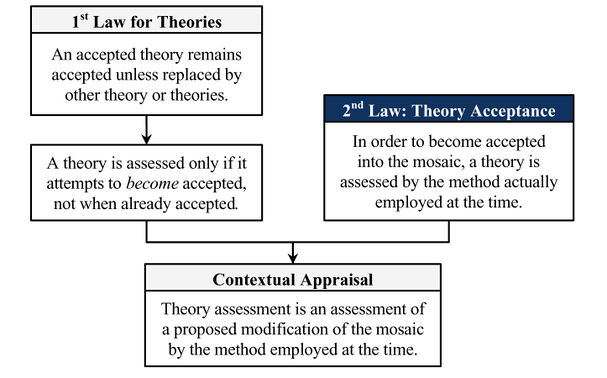Difference between revisions of "Contextual Appraisal theorem (Barseghyan-2015) Reason1"
Izzy Friesen (talk | contribs) (Created page with "{{Reason |Conclusion=Contextual Appraisal theorem (Barseghyan-2015) |Title=Deduction of the Contextual Appraisal theorem |Premises=The First Law (Barseghyan-2015), The Second...") |
|||
| Line 3: | Line 3: | ||
|Title=Deduction of the Contextual Appraisal theorem | |Title=Deduction of the Contextual Appraisal theorem | ||
|Premises=The First Law (Barseghyan-2015), The Second Law (Barseghyan-2015) | |Premises=The First Law (Barseghyan-2015), The Second Law (Barseghyan-2015) | ||
| + | |Formulation Text=The contextual appraisal theorem is a deductive consequence of the first law and the second law. | ||
|Diagram File=Contextual-appraisal.jpg | |Diagram File=Contextual-appraisal.jpg | ||
|Authors List=Hakob Barseghyan | |Authors List=Hakob Barseghyan | ||
|Formulated Year=2015 | |Formulated Year=2015 | ||
|Description=Barseghyan presents the following description of the deduction of the ''contextual appraisal theorem'': | |Description=Barseghyan presents the following description of the deduction of the ''contextual appraisal theorem'': | ||
| + | |||
<blockquote> By the second law, in actual theory assessment a contender theory is assessed by the method employed at the time ... In addition, it follows from the first law for theories that a theory is assessed only if it attempts to enter into the mosaic; once in the mosaic, the theory no longer needs any further appraisal. In this sense, the accepted theory and the contender theory are never on equal footing, for it is up to the contender theory to show that it deserves to become accepted. In order to replace the accepted theory in the mosaic, the contender theory must be declared superior by the current method; to be “as good as” the accepted theory is not sufficient.</blockquote> | <blockquote> By the second law, in actual theory assessment a contender theory is assessed by the method employed at the time ... In addition, it follows from the first law for theories that a theory is assessed only if it attempts to enter into the mosaic; once in the mosaic, the theory no longer needs any further appraisal. In this sense, the accepted theory and the contender theory are never on equal footing, for it is up to the contender theory to show that it deserves to become accepted. In order to replace the accepted theory in the mosaic, the contender theory must be declared superior by the current method; to be “as good as” the accepted theory is not sufficient.</blockquote> | ||
| + | |||
| + | {{PrintDiagramFile|diagram file=Contextual-appraisal.jpg}} | ||
|Resource=Barseghyan (2015) | |Resource=Barseghyan (2015) | ||
| + | |Page Status=Stub | ||
| + | |Editor Notes= | ||
}} | }} | ||
Latest revision as of 10:52, 17 January 2024
Barseghyan presents the following description of the deduction of the contextual appraisal theorem:
By the second law, in actual theory assessment a contender theory is assessed by the method employed at the time ... In addition, it follows from the first law for theories that a theory is assessed only if it attempts to enter into the mosaic; once in the mosaic, the theory no longer needs any further appraisal. In this sense, the accepted theory and the contender theory are never on equal footing, for it is up to the contender theory to show that it deserves to become accepted. In order to replace the accepted theory in the mosaic, the contender theory must be declared superior by the current method; to be “as good as” the accepted theory is not sufficient.
This reason for Contextual Appraisal theorem (Barseghyan-2015) was formulated by Hakob Barseghyan in 2015.1
References
- ^ Barseghyan, Hakob. (2015) The Laws of Scientific Change. Springer.
